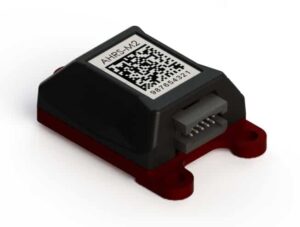In this article Kenneth Gagnon, Principal Electrical Engineer at Sparton NavEx, explains the ‘Adaptive Calibration’ technology developed by Sparton for use in digital compasses and inertial systems.
Summary:
Conventional digital magnetic compasses require a complex and cumbersome “in-field” calibration process. This calibration, commonly referred to as the “Kabuki Dance”, is not embraced by most users including the military and is often performed improperly, incompletely, or sometimes not at all. This results in diminished sensor performance and poor overall accuracy, in targeting and other applications. Field calibrations are vital to account for changes in magnetic signature of the system platform. This signature can change over time due to variables including installation of new batteries, different system modes (day/night), or residual magnetic charging of internal components.
Sparton has developed a new calibration mode that utilizes the motion of the host device to collect and process calibration measurements in real-time. This “adaptive calibration” mode dramatically simplifies the calibration procedure while maintaining good overall performance and accuracy. While not designed to totally eliminate the manual in-field calibration, it can be used as the sole method of calibration should a manual calibration not be possible. Best results will be obtained when the Sparton AdaptCalTM mode is used to build upon a previously performed manual calibration.
Introduction:
Sparton designs and manufacturers integrated MEMS-based inertial systems for precise measurements of direction and platform attitude (heading, pitch and roll). These systems provide enhanced capabilities and proprietary features that surpass the conventional digital magnetic compass (DMC).
Recent product advancements designed specifically for Targeting Sensors have shown positive results and acceptance by the industry. These have included:
- An enhanced calibration algorithm allowing limited pitch & roll operation and reduced convergence time
- A “non-magnetic” mode allowing operation using only the inertial sensors (accelerometers & gyros)
- Figure-of-Merit indicators for estimated heading accuracy and quality of calibration
- Precision mounting option for remote location of the device within the host system to minimize magnetic errors
Sparton’s latest development is a next generation product providing significant SWaP-C reductions and a breakthrough calibration method. The Sparton AHRS-M2 offers functionality comparable to our current products with the addition of an adaptive calibration mode. The smaller form factor of the AHRS-M2 also significantly reduces its size and weight.
Technical Background:
Sparton’s AHRS-M2 utilizes innovative magnetic mapping and advanced adaptive algorithms to maintain overall system accuracy in real-time. The device offers two calibration modes: Precision Manual Calibration and the new Adaptive Calibration, or AdaptCalTM, mode.
Adaptive calibration frees the user from the periodic calibrations necessary to keep a system at optimal performance over extended periods of time. During normal movement of the product, the adaptive calibration algorithm will automatically select points to insure spherical diversity and start converging to a solution when an adequate number of points have been collected. The solution is further refined in real-time when new measurements are received without any intervention from the user.
Precision manual calibration offers the user the ability to calibrate the system once and retain that calibration for future use. The maximum number of measurements has been increased from 12 to 32 to allow for more detailed calibrations in applications that may have a highly-distorted magnetic environment. Users can take measurements in any orientation as long as the points are spatially diverse and not limited to one direction. For a good calibration, the device must be able to “see” the Earth’s magnetic field from different orientations in order to know what the magnetic distortions look like in 3-dimensions. The precision calibration runs the same adaptive algorithm to solve for magnetometer errors as in the adaptive calibration. The user can also select what action the algorithm takes once convergence to a solution has been achieved. The manual calibration can either turn itself off after convergence, stay in the manual calibration mode waiting for additional measurements while continuously converging, or transition to the adaptive calibration.



















